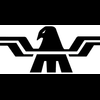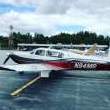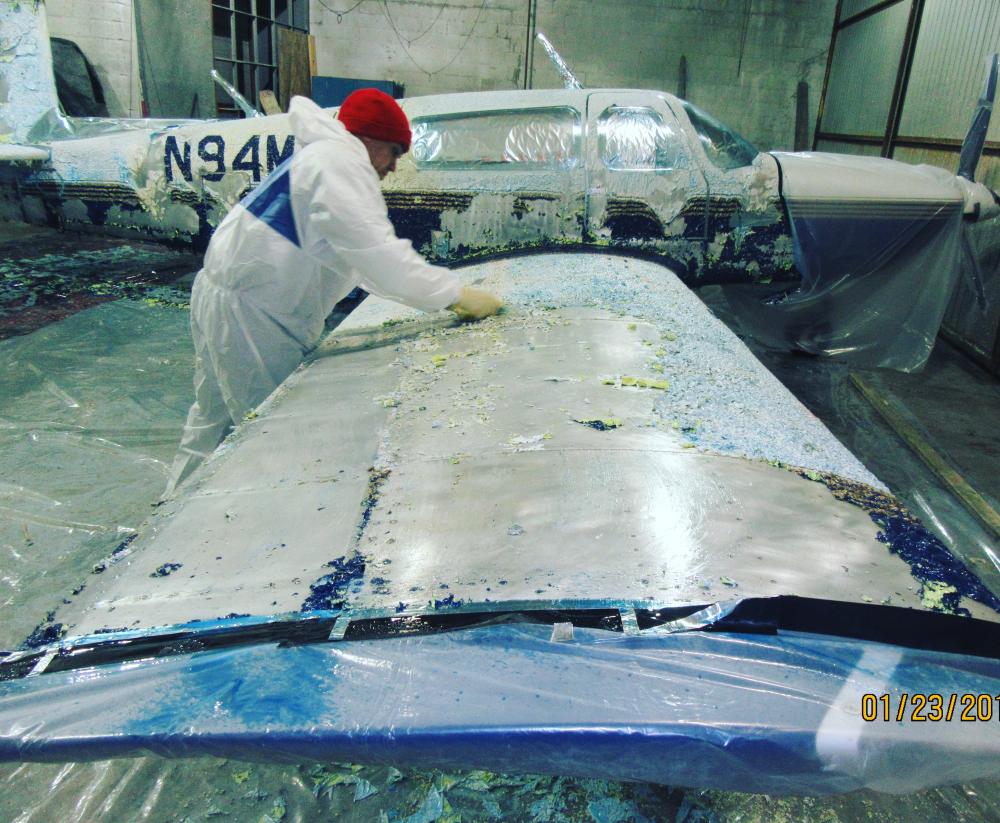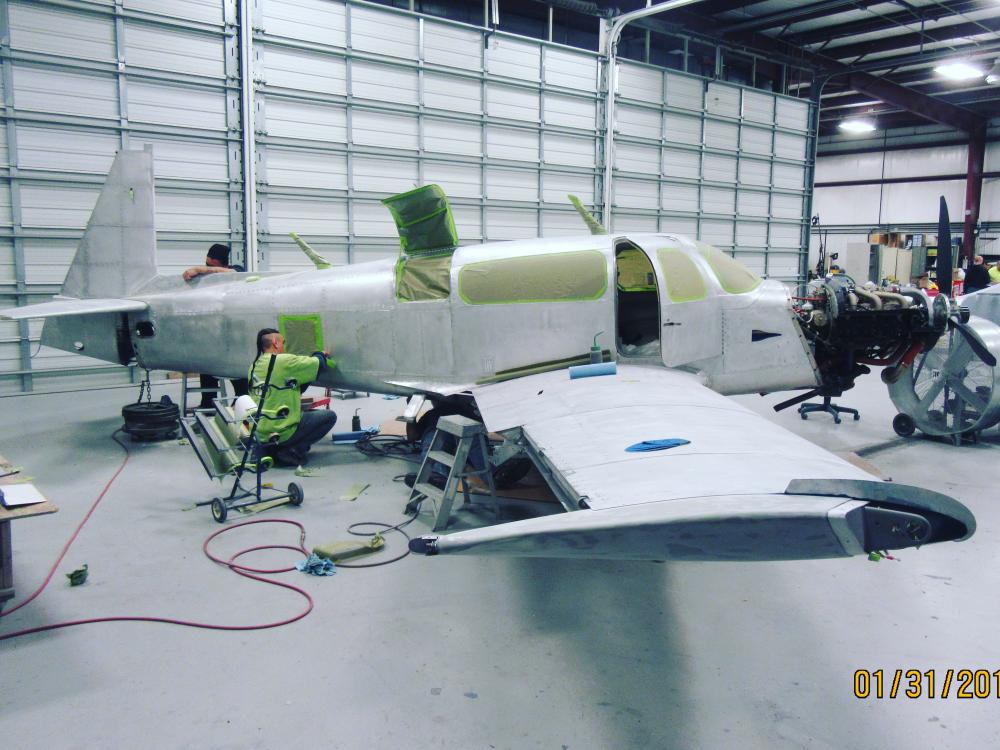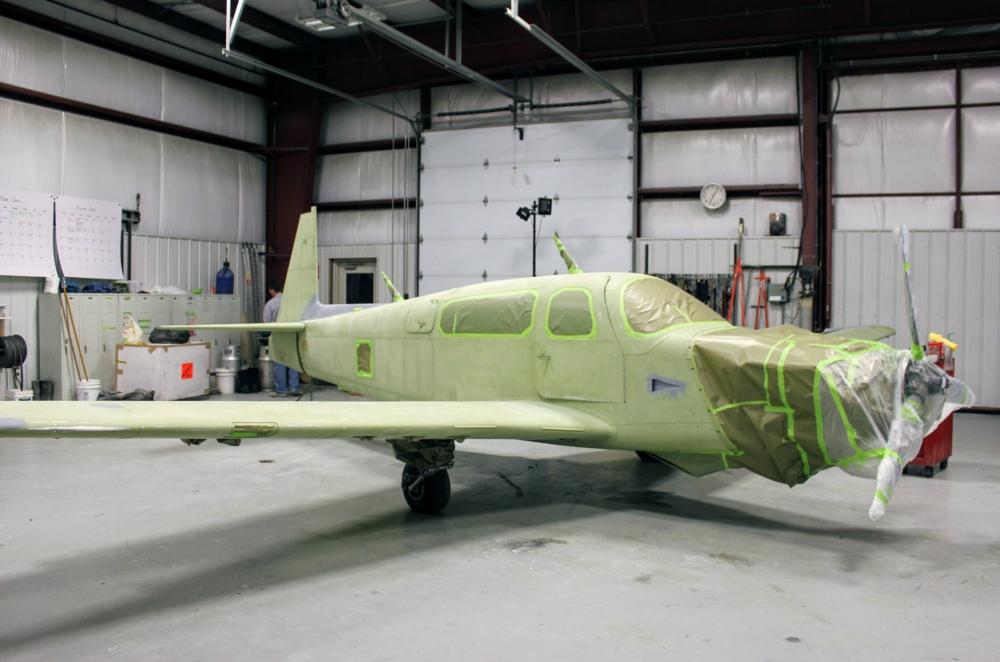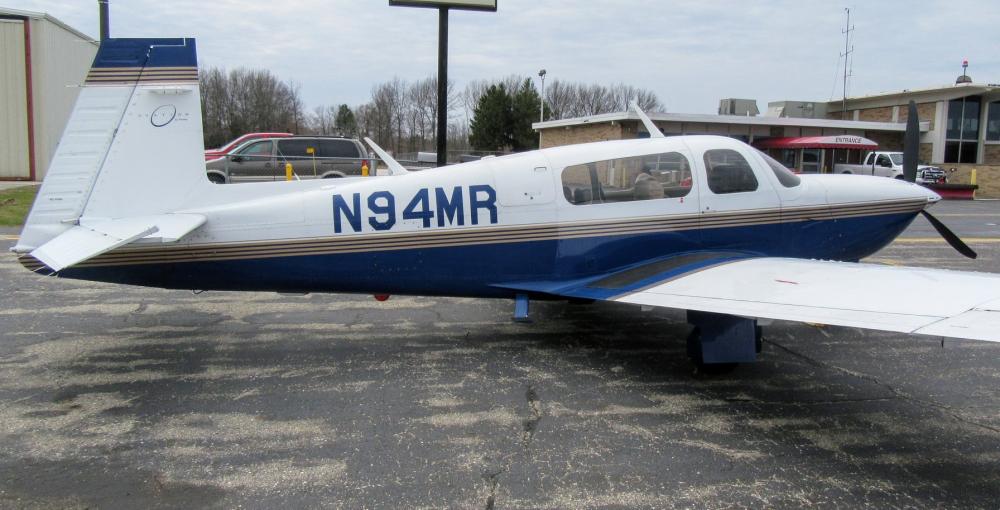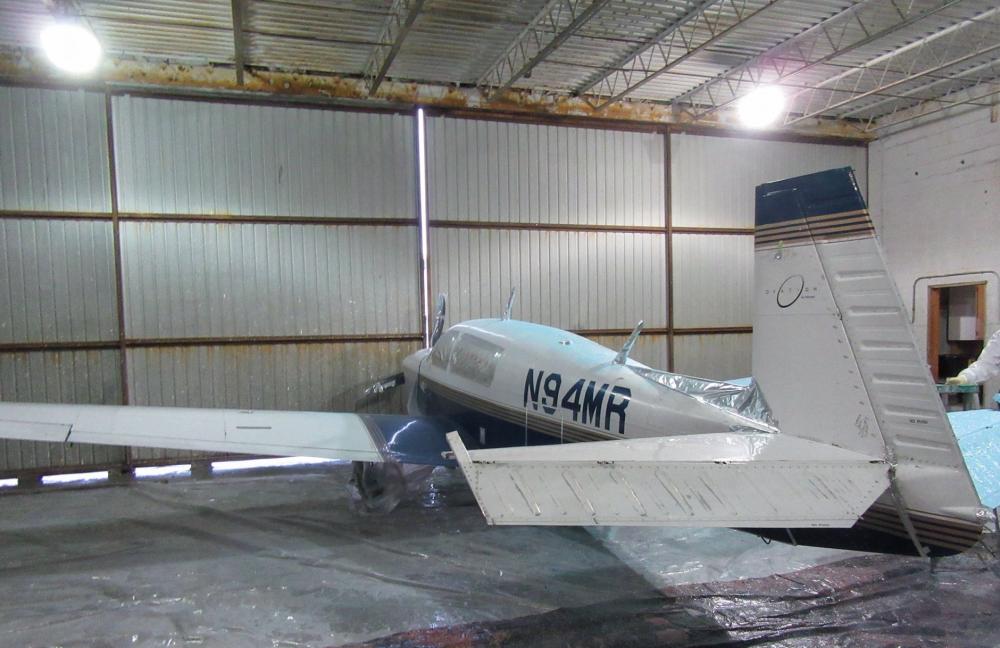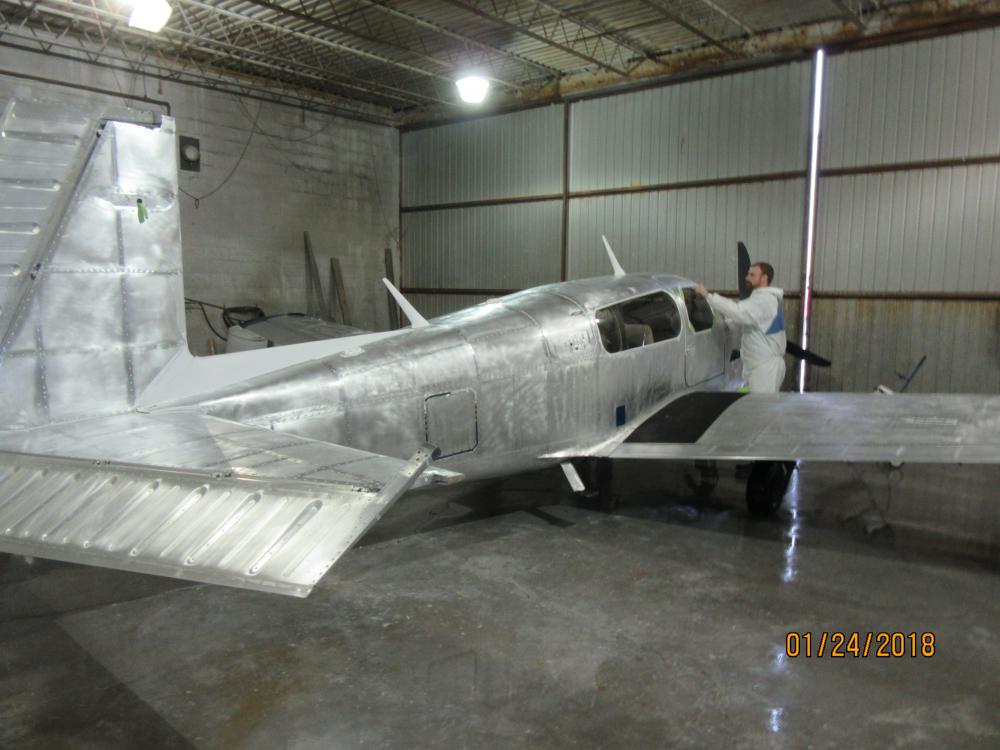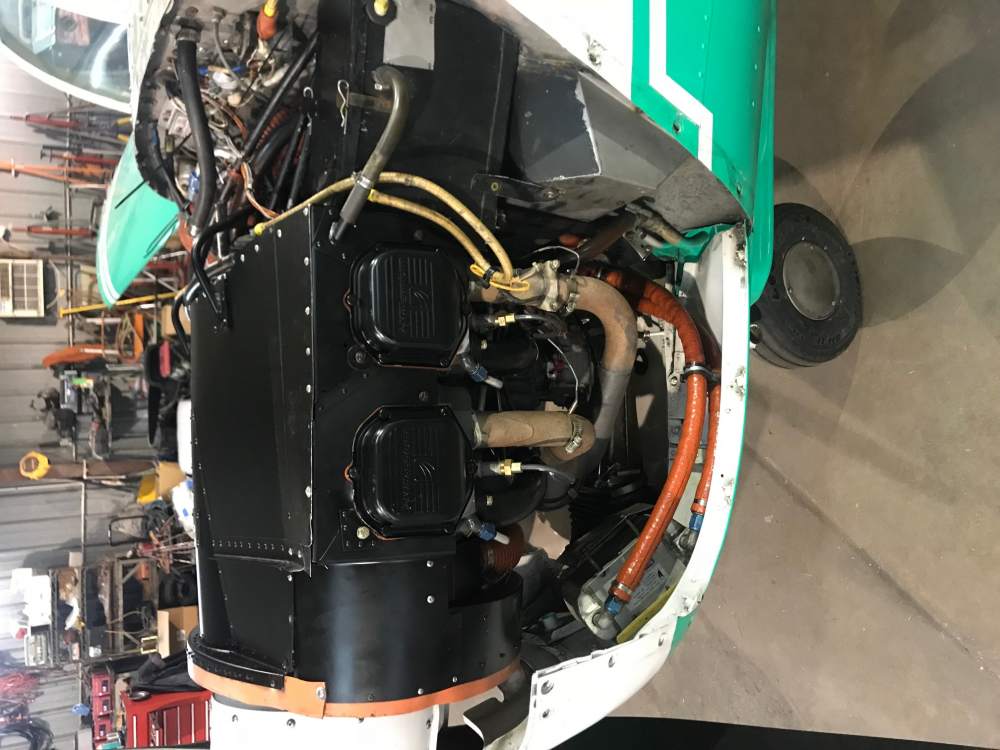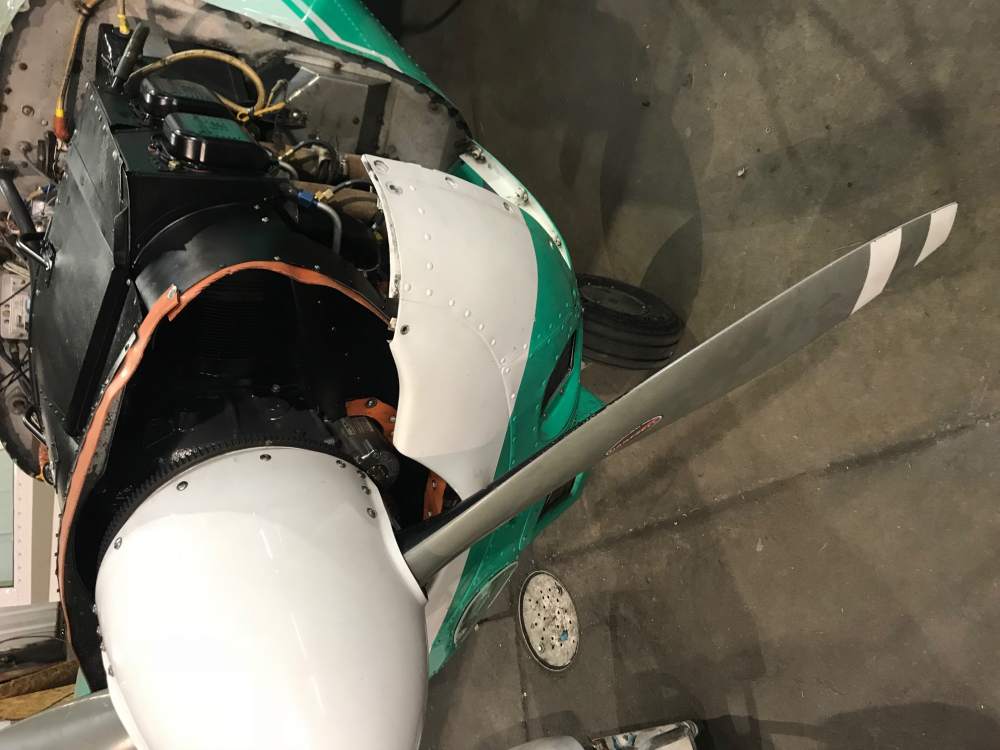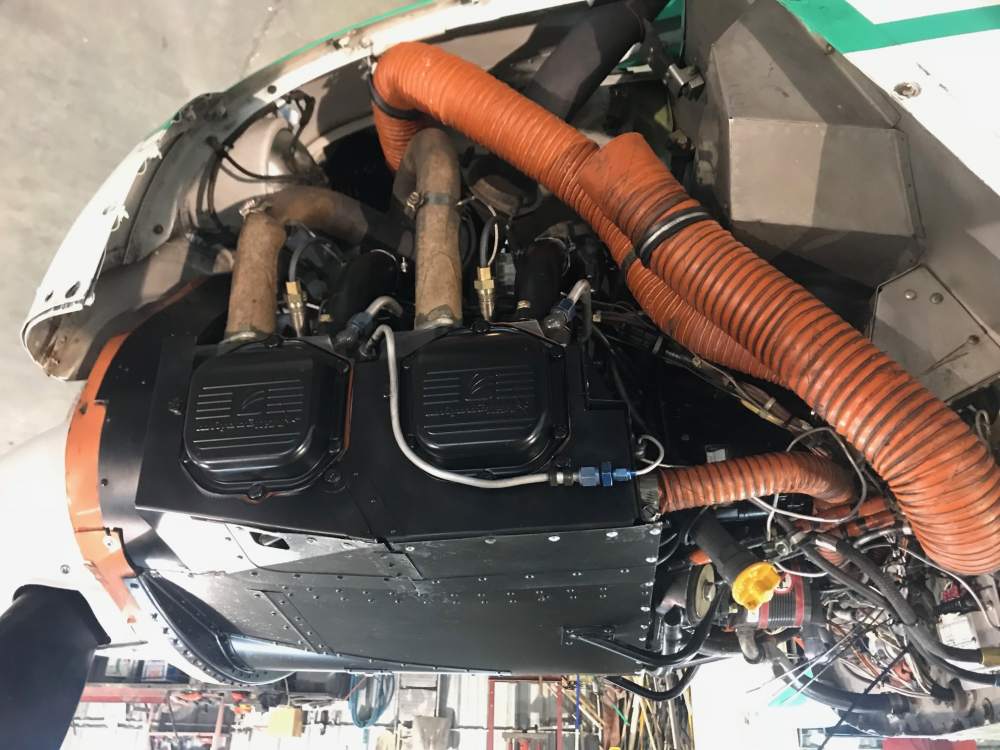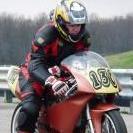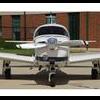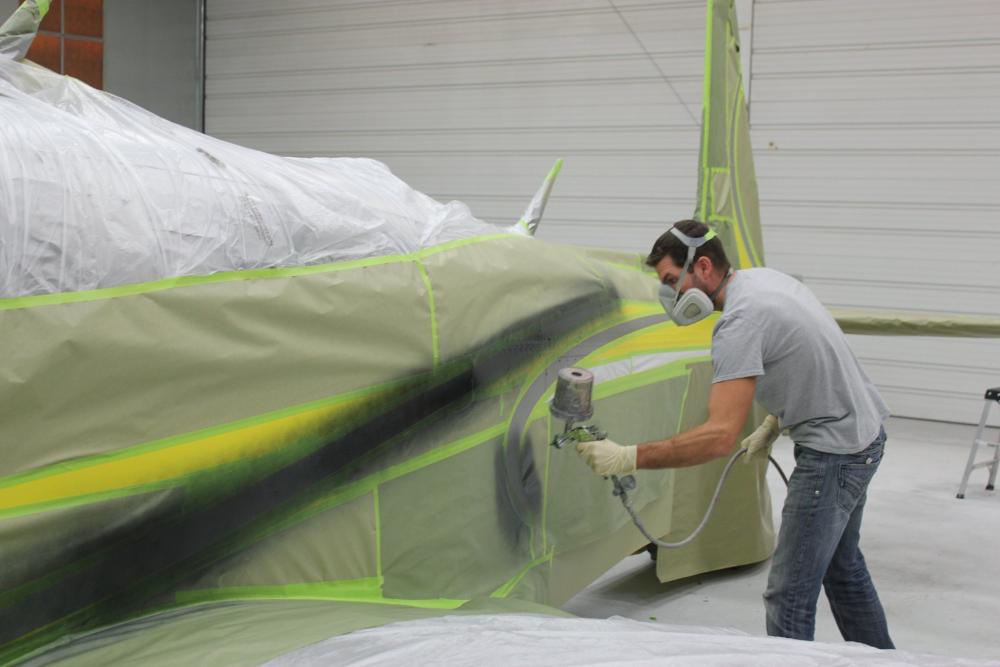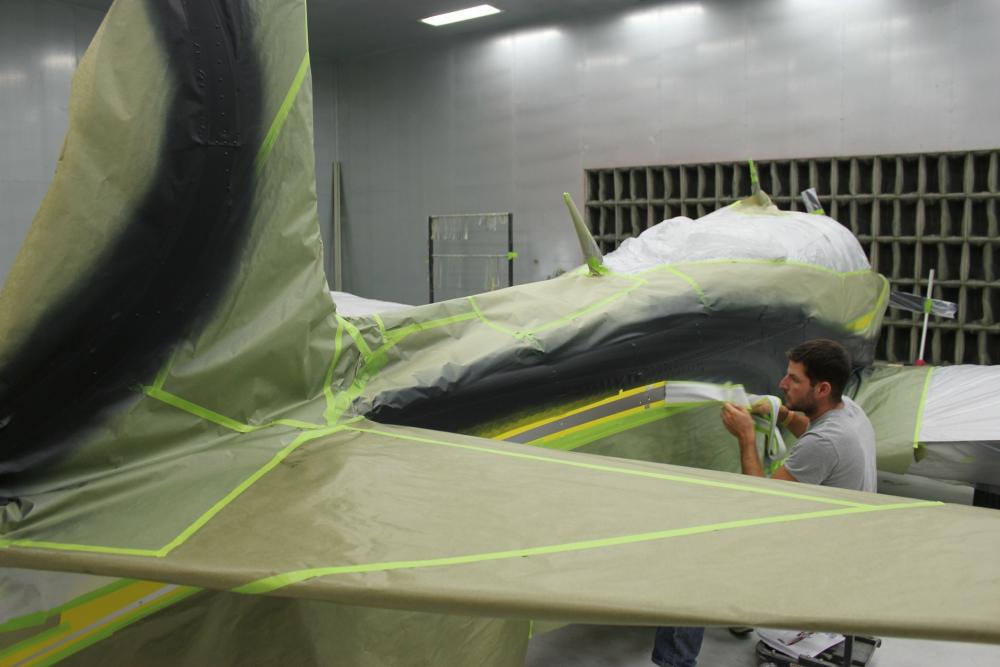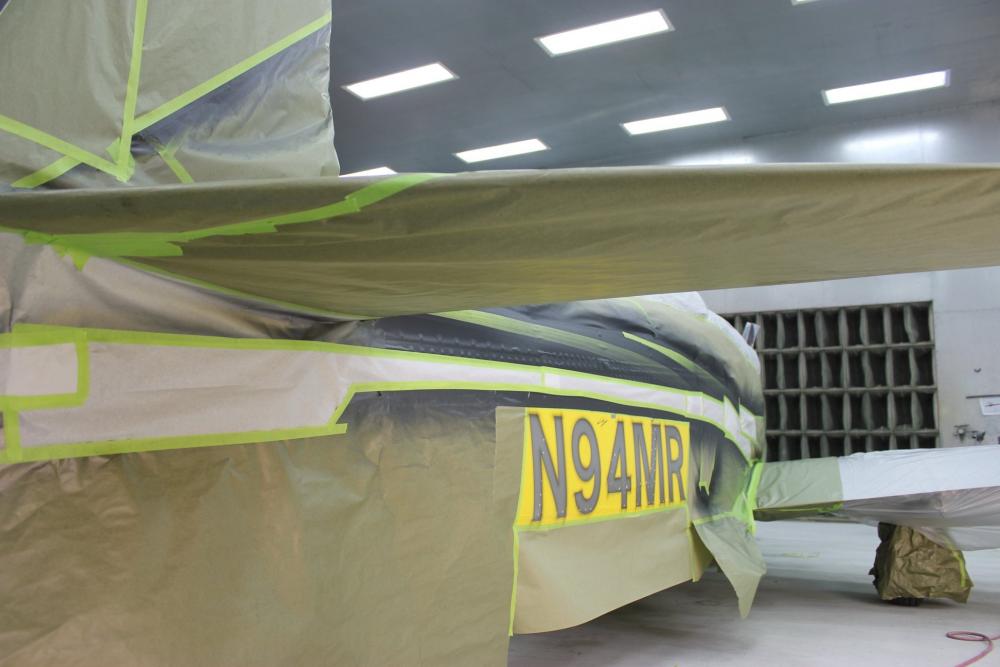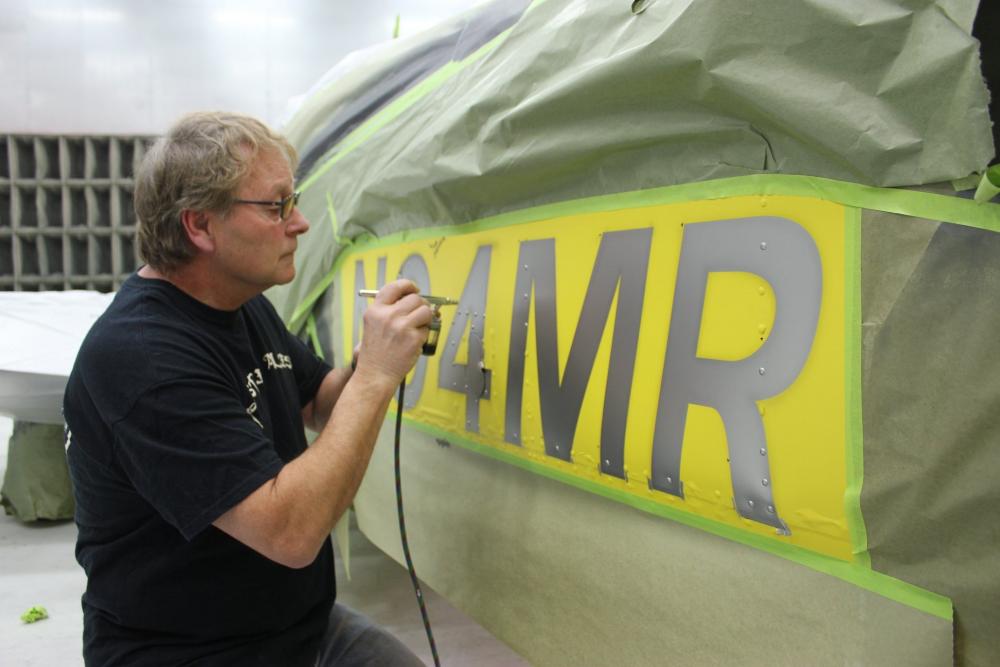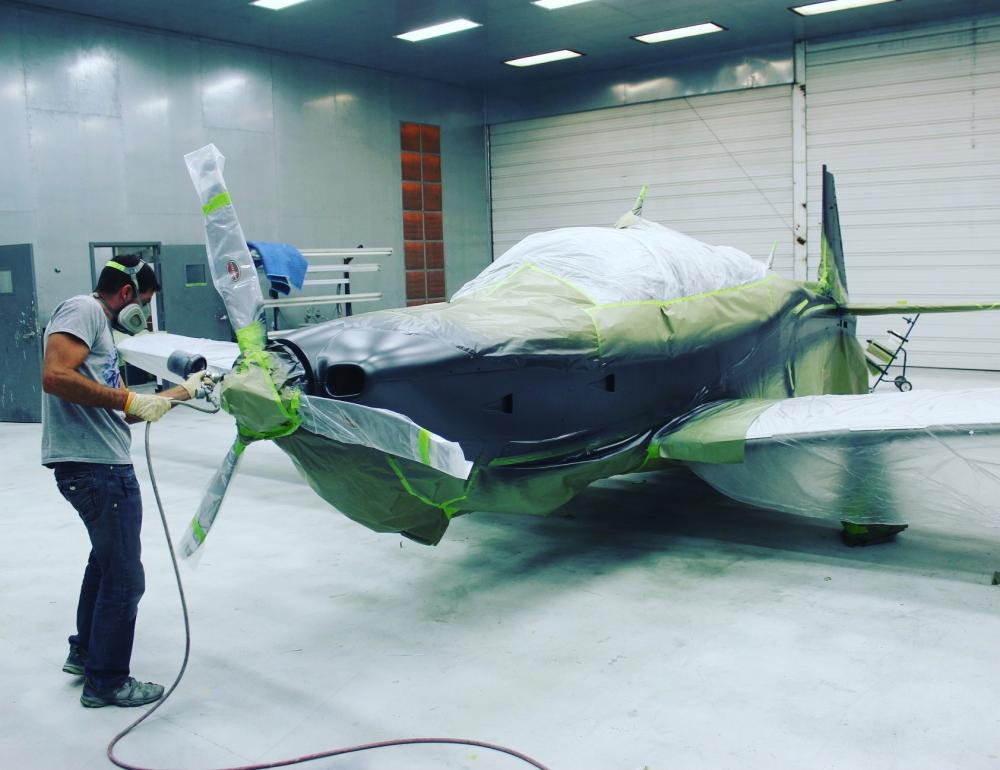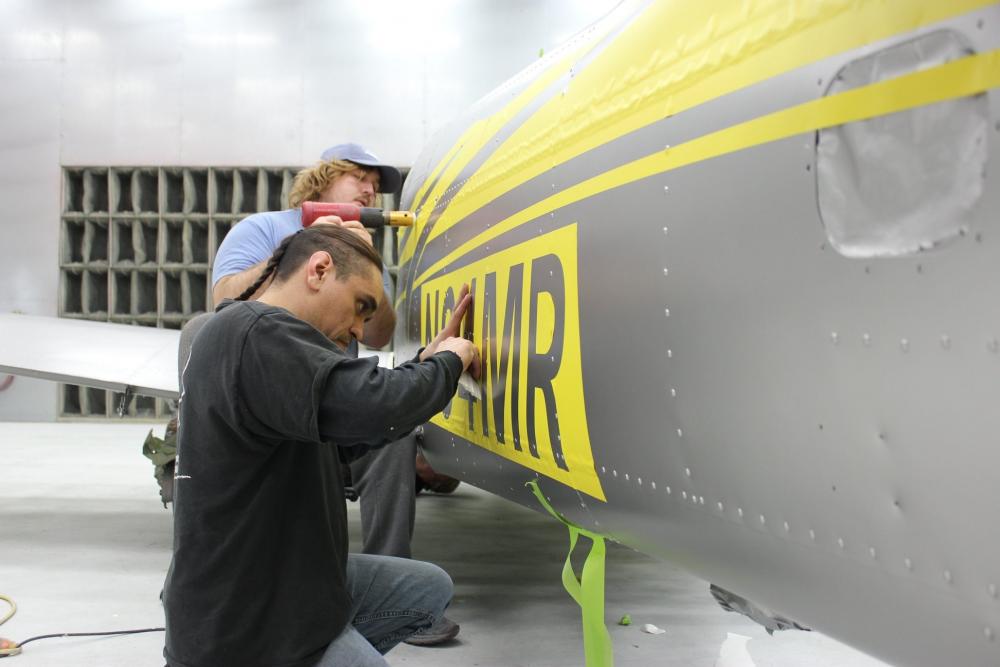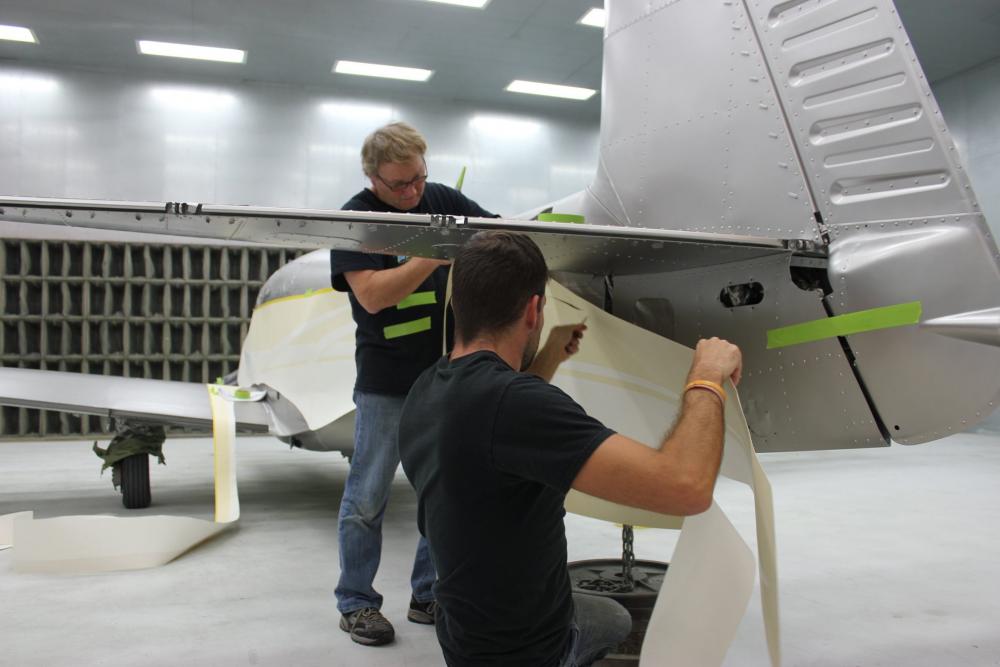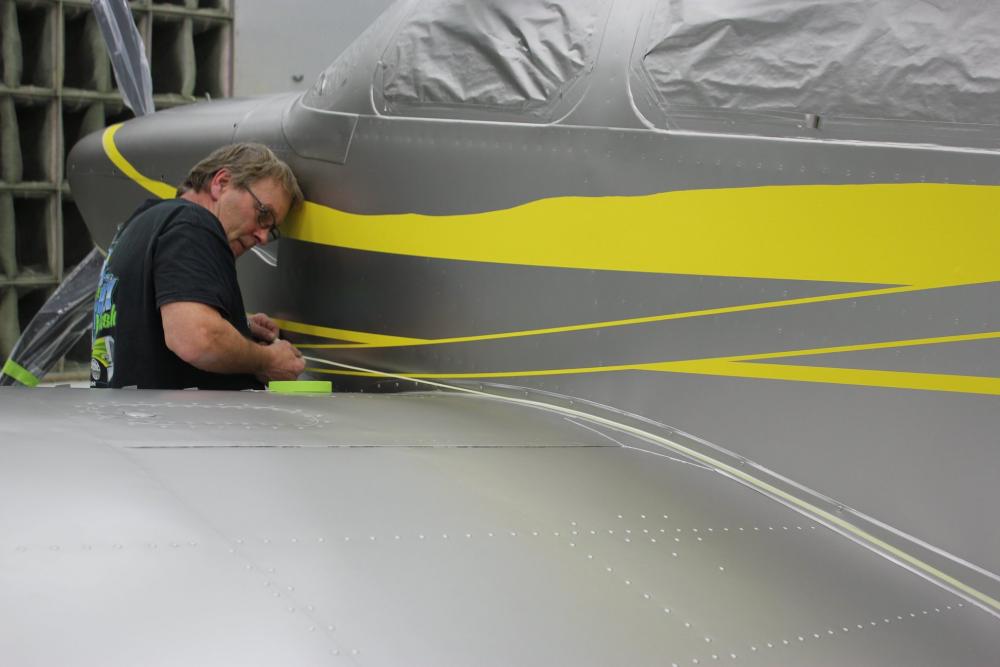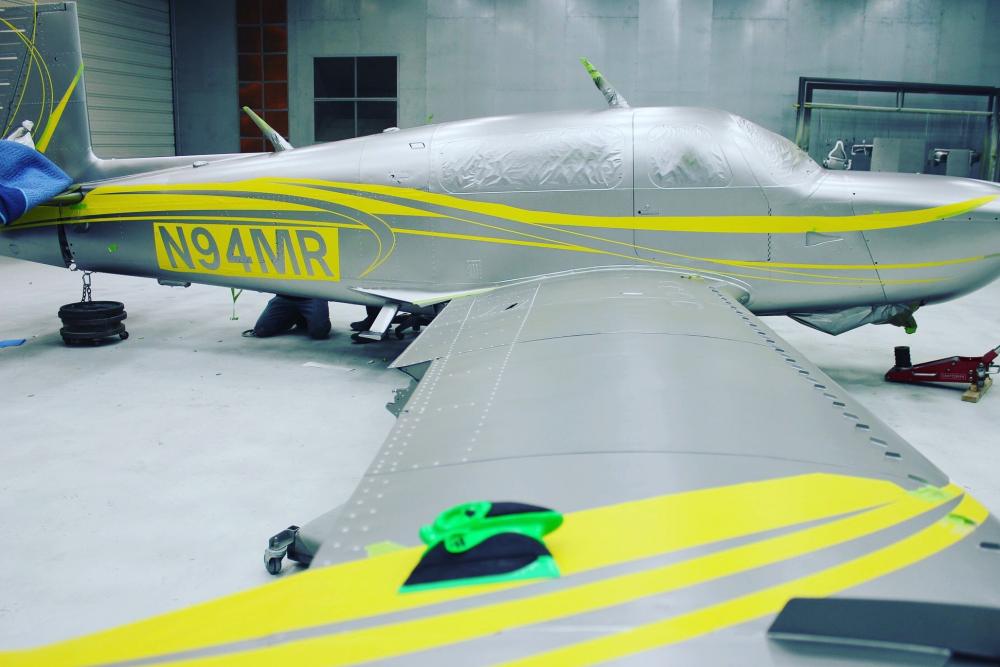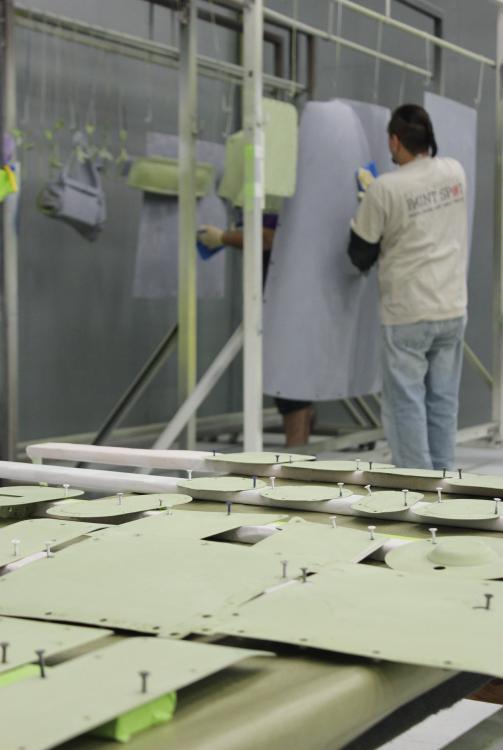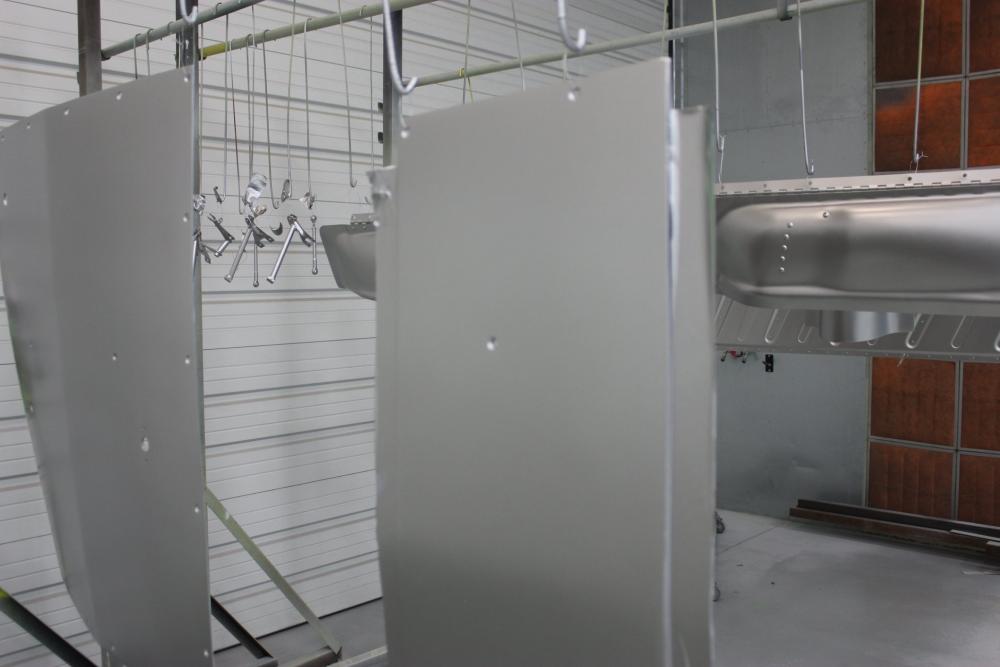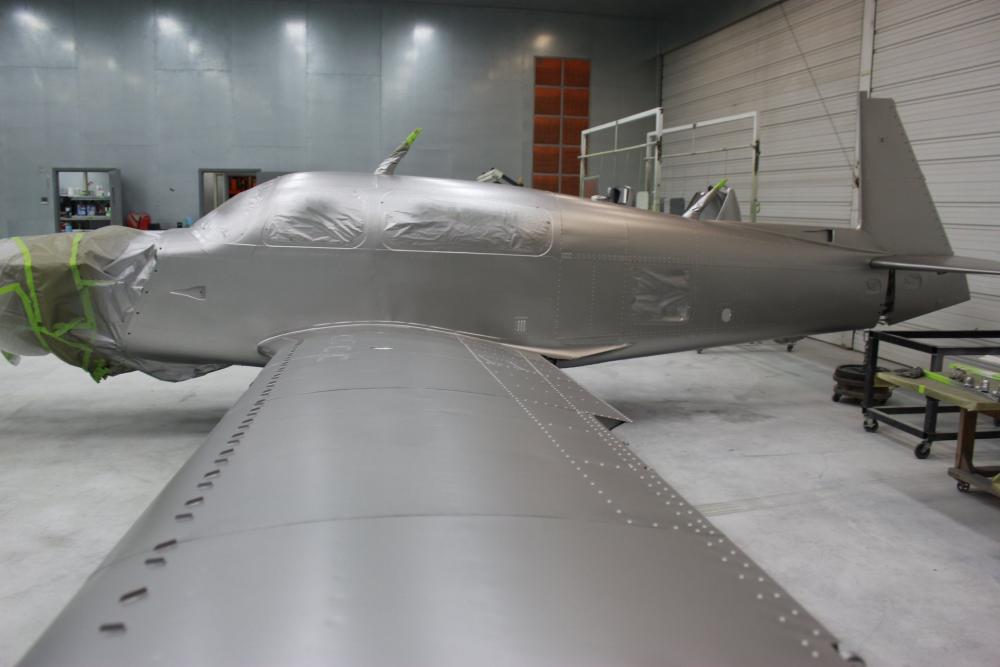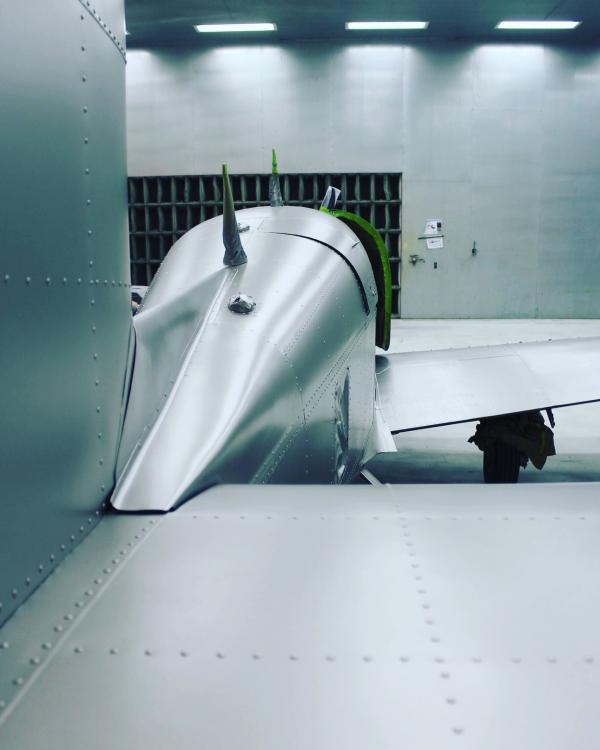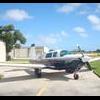Leaderboard
Popular Content
Showing content with the highest reputation on 02/24/2018 in all areas
-
So- time to update this thread. I’m about 18 hrs into training and got my first real IMC today- over two hours of it. I thought I had gotten decent at tracking a localizer/ glideslope. But today I really sucked at the loc as we got close to KGED, which had a legit 250ft AGL ceiling this am. My brain just did not work the same way as when under the foggles, and I was all over the place. I went almost full scale deflection as we approached 300ft msl minimum. I looked to my instructor and said “go missed?!” with beads of sweat on my forehead. At that moment he pointed out the runway, which was emerging way to the right in my visual field. I was surprised at that point that I was able to put it down smoothly, despite the extreme stress moments earlier. All part of the process I suppose.4 points
-
When arriving and departing an extremely busy untowered field with heavy training ops, don’t double, triple, quadruple...quintuple or sextuple check to make sure your ctaf frequency is correct because you’re not hearing any of the other planes you can clearly see. Nope, that’s not enough to verify you have the last two digits backward. Nope, I should have made that 7th check digit by digit. I’m sure all the CFIs were pointing “that mooney” out as examples to their students! Doh! I guess there is no substitute for eyeballs though.3 points
-
3 points
-
My wife and I were driving east on I 10 in South Texas on our way back to Cincinnati from Phoenix when I saw a sign "Kerrville next exit". I pulled off and explained to my wife that Mooneys are made in Kerrville and maybe they would be willing to give us a quick tour. She was ok with it and I called Mooney. I talked to the girl on the other end of the line, she took my information and said she'd have someone call me back. We went to an antique shop to kill some time and while we were there a Jeff from Mooney called and asked if we could be there in about 20 minutes or so. Daaa, I agreed. So, after arriving at the guard shack, signing in and getting our name tags we were greeted by Larry, a long time time Mooney employee. He gave us the full tour, maybe two hours, and answered all my questions and then some. Great tour guide, great employees and a very clean and neat work environment. Very impressive! I learned some new things like the the new two door planes have fiberglass skin around the passenger compartment instead of aluminum skin. No weight penalty. I assume assembly cost was reduced but more important to me, I would imagine interior noise would be reduced?? Also, I didn't know that aluminum could be heat treated but it can, he showed me the furnace and explained that after it is heated it is dipped in glycol(?) to keep the air from the surface then it is cooled to approx 32 degrees (?). It remains soft and can be metal worked and formed. After it is worked the glyco is removed and when air hits the surface the aluminum becomes hard. Hopefully I have this right. Anyway, a great day. I think these guys just might make it. They all have a good attitude and they sure make a great product.2 points
-
I like the image of your instructor calmly pointing IMC is MUCH different from working under the hood. On the one hand, when under the hood you still get subtle cues about your orientation--shadows moving, the horizon out of the corner of your eye, the motion of glare from the sun, etc. On the other hand, in IMC, you do get cues, but they are often misleading--false horizons, reflections from clouds, and having to move your eyes from inside to outside as you go in and out of VMC. I'm "lucky"--there's no shortage of actual IMC out here in the Northwest for much of the year, so I actually did most of my dual time in IMC. When I started doing hood time in VMC, it felt kind of like cheating. Realistically, of course, training in actual IMC is important because you have to get used to looking outside the window as part of your scan, which you don't have to under the hood. If IMC is forecast, try to collar your instructor any chance you get.2 points
-
You mean silence isn't always golden? Our community requires us to turn on the runway lights for both day and night ops (warns the kids on golf carts). Lights are on the unicom freq, so if I can't get the lights to come on, I'm either keying the wrong freq, the wrong radio, or both. No help for a low volume setting, though.2 points
-
FWIW, Lycoming recommends it in a Service Letter. https://www.lycoming.com/sites/default/files/Spark Plug Fouling.pdf I have great respect for Mike Busch and have learned a lot from his webinars. I also regard highly Lycoming’s recommendations and guidelines. I have learned and continue to learn from their literature.2 points
-
I'm one who regularly runs a tank dry... or about once a month or so. But my fuel selector is smooth and has never given any indication of trouble. So I don't expect it to just quit moving one day. I would expect it would get sticky or difficult to move in which case it would get serviced before running any tanks dry. I also only ever run a tank dry at altitude which for me is almost always above 10K ft. which gives me options. I use a very similar system as @jetdriven. But I do it based on gallons used. For example I might take off on the left tank and burn 15 gal leaving 20. Then switch to the right tank and run it all the way dry. Finally switch back to the left where I still have 20 gal and plan to land with at least 10 still in the tank. If I've reached my top of decent and am ready to start down but the right tank isn't quite empty, I'd probably switch anyway. I don't like to be running a tank dry when I'm doing anything other than straight and level.2 points
-
Right - that gasket was not being changed early on in my ownership as I was using the local guy....I have corrected that. That and many other mooney-specific issues can be either costly, dangerous, or both if overlooked. Oh - I read about the pvc pipe thing and I assumed it was a height of pilot thing.2 points
-
Love this picture! It totally debunks the "don't jack with the tail tie down" story. This jig has two jacks for the wings and a tail tie down strap at the back on a long body . . . . .2 points
-
I never run one tank dry unless I am going to land with less than 10 gallons total and Ive already switched tanks during that flight. For example, depart full. Run on LH tank 1 hour. RH 1 hour. then run left another 45 mins, which leaves 12 gallons in that tank. then run right empty., which takes 1.7 hours. I may joggle this schedule somewhat to time it to run the RH tank empty near top of descent. If tank isnt dry at TOD, switch anyway there isnt much left. Top of descent, 12 gallons good in one tank, 15 minutes left to fly. If landing with more fuel, dont run RH so low, but always land with 10 gallons in the selected tank. You must plan the fuel imbalance at top of descent.2 points
-
@mike_elliott could probably explain it better than I, however one of the driving factors to holding the Summit in PCB stems from one of the Summit founders generosity each year. Ron @rocketmanhappens to own multiple properties in the area and has worked out deals allowing the Summit access to conference rooms and lodging. The FBO is also very supportive as well.2 points
-
Shortly after getting let loose for solo flight with The Mistress I decided to fly over to Liberty (TX, T78) to get some of their cheap, self-service Avgas. So I'm approaching the airport and the engine begins to cough. I panic. You know how people say that just before you die your life passes in front of you? Well, as I tried to figure out what was wrong I remembered reading an AOPA article a few days before where they explained that the FAA had determined that most accidents were caused by pilot error. Of the pilot error accidents, the number one error was fuel management! I looked down and saw that the fuel selector was pointing to what was now a near empty tank. Seriously, why fly to Liberty with full tanks? Anyway, I reached down and switched and the engine literally roared backed to life. The rest of the trip was uneventful excepting the chill from my soaked shirt. Thank gawd my luck bucket was as full as it was at the time. I take fuel management very, very seriously and all components that affect it now.2 points
-
Yes, I really like having the AXP322 remote transponder. You typically only set or change the squawk code once or maximum twice during a flight. And its so easy to do from the IFD540 screen. So why have a transponder taking up space in the panel when you never use it. I put everything in the tail that I could including the EA100 autopilot interface for the Aspen. You might not need that with a C41. As you can tell, I wanted a clean minimalist panel. And the more I fly with it the more I like it. The reason for the gap between the KX165 and the IFD is just that it worked out that way. We didn't move the KFC150 and because the PMA450a audio and the IFD540 were slide in replacements for the 530 and the GMA340, we really didn't change up the center stack. But I did remove a KNS80 and replaced it with the KX165 which was just a little bit smaller leaving the small gap. I keep thinking that one of these days I'll open up that gap and line it with felt or something to make a tray where I can toss a note pad or something. I tried to think of the things I use regularly on every flight and spend money to have the best of those items and not spend on other stuff. The second nav/com is just not used that often in the current /G environment. So I just found me a used KX165 just to have a second nav/com but without spending a lot on it.2 points
-
2 points
-
My fist time being on Mooney Space. Apparently this community is super large and everyone has something good to contribute. I’m glad I started this topic and everyone asking my questions. Thank you All! Shawn Sent from my iPhone using Tapatalk2 points
-
1 point
-
1 point
-
1 point
-
I use gallons too, to the gallon. and the truck fills it up the exactly what i thought it will take but now my FF meter is broken. Time for more boxes fro Aircraft Spruce.1 point
-
I have the Skytrax and it only shows the adsb data on my IFD100 and IFD440. I use the wireless on the 440 to transfer flight plans to and from my foreflight iPad then switch it to my Stratus 2S for traffic and weather. If I had a IFD540/550 I would get rid of the other iPad and be able to have charts. Sent from my iPhone using Tapatalk1 point
-
Of course not - That would ruin my sunshine narrative. We were talking housing costs.1 point
-
I notice you do not mention the cost of snow removal or your thermal LL Bean's budget.1 point
-
Those gascolator o-rings should be replaced every annual when they are pulled for inspection, but its seems that doesn't always happen. I didn't think any of the K's came with out the fuel selector not being in the center, making it easily reachable by all pilots. The problem requiring the PVC tool was for the vintage Mooneys where it was placed in front of the pilot seat along with the gascolator drain ring and if the pilot flies with his seat forward the first required step is move the seat back and then use the PVC tool to reach it. With the fuel selector positioned in front of the trim wheel this issue is eliminated entirely. Its a shame Mooney wasn't able to do this much earlier.1 point
-
1 point
-
Bob, when are you going to start calling your plane a Super-er 21? I think you have moved beyond just super at this point. Looking forward to seeing the upgrades.1 point
-
Summit is 9/27-30 (KECP) and MAPA Reunion is 10/11-14 this year (KERV). FWIW, we hope to ride a freshly painted, GDS Aero LLC (@Sabremech) cowled, Super 21 to both events. The 64 gallon Griggs/O&N bladders should make the ERV trip a one stop instead of 2 trip.1 point
-
I just picked up another 540 , just back from Avidyne... Andrew, Alan isn't too far from NYC. If you can make a deal that includes delivery to me at JFK Terminal 1 this Tuesday afternoon, you can have that 540 before the end of the month.1 point
-
Yea, they are so cool inside. Little ruby jewels are used for spindle races. I found a place in PA I may send it to get fixed.1 point
-
I second the AXP322, Paul helped talk me into it and not one regret. Sent from my iPhone using Tapatalk1 point
-
I might go for that, it beats living in the US when you're a brown person1 point
-
Jpi make a flushmount like the Stein G5 mount. It has 8 mounting screws, although only 4 are needed. I can easily make a Garmin G5 plate and spacer style mount, the advantage would be that I can more easily customize the location of 4 mounting screws for aethestics are well as practicality. And by using smaller spacers, you can have the EDM900 protrude 1/8” like the G5, thanks for the idea, Aerodon1 point
-
Well, Stick and Rudder by Wolfgang Langewiesche was mentioned earlier and I will just add that it is required reading for any pilot. My personal favorite is West with the Night by Beryl Markham. I frankly think she was the greatest female aviator of all time and when you read Lovell's biography of her (Straight on Till Morning) you get to really wishing you had known her--she slept with Denys Finch Hatton (who taught her to fly) as well as Antoine de Saint Exupéry (Wind, Sand and Stars and Night Flight.), but blew off Hemingway--not literally, who called her a bitch but grudgingly admitted that she was a great writer. She made Amelia look like a student pilot.1 point
-
The Angular 2 is one more. (It's funnier if you say it in a Nigel Tuffnel accent talking about your amp)1 point
-
The only way to go. LASAR also has a very clean, 'Buck Rogers' stainless steel tail skid that is also the only way to go. One of the least expensive customizations you can add to an aging Mooney1 point
-
North Star Over My Shoulder by Robert Buck. DC2 to 747 Captain with Howard Hughes in between. I see his weather book reccomended which is very good but reading what he did to write that book is even more amazing.1 point
-
I regret not getting the AXP322 remote. It was $1000 more expensive a couple of years ago. Now they list for the same price and I hear you can buy it cheaper than an AXP340.1 point
-
Of course! I use the emergency extension Johnson Bar every time I go flying!1 point
-
I think they're saying close is good enough. None of the transport category aircraft I have flown have a turn coodinator, which led me to remove the one in my 201 as well. Circling maneuvers are rare, but I do have them on my Type rating for the 747-400 and the 737NG. We were always trained to use ~25 degrees of bank. If course use all available information (DME, GPS, etc) to remain in the protected zone. Yes I agree strongly with you, that less than standard rate turns can get you into trouble. https://www.faa.gov/documentLibrary/media/Advisory_Circular/AC91-75.pdf "Replacing the rate-of-turn indicator will mean losing an easy reference for standard rate turns. However, in today’s air traffic control system, there is little need for precisely measured standard rate turns or timed turns based on standard rate. Maintaining a given bank angle on theattitude indicator for a given speed will result in a standard rate turn. Pilots using this AC to substitute an attitude indicator for their rate-of-turn indicator are encouraged to know the bank angle needed for a standard rate turn."1 point
-
1 point
-
To all of my fellow VFR mooney pilots - just a thought in the new year. Please consider getting an Instrument rating. I was flying from the RDU area to LYH today to pick up the little one who was at her grandparents. En route I start to hear some chatter between the approach controller and a fellow mooney pilot... the Mooney was stuck on top of an overcast layer. Apparently he had been anticipating it would break up by the time he got towards his destination. Apparently the flight was from Florida to Virginia and the overcast layer that the pilot was stuck above started in Georgia and the undercast started rising near RDU. There were multiple transport jet reports of light and a couple of moderate icing in that layer. Looking at the track this is the only reasonable interpretation for the climb to 9500 as the winds were stiff and the pilot gained 30kts on the nose with a ground speed of only 105 up there. Ultimately the pilot made a VFR descent through the cloud layer to VMC conditions below. Never declared. Both the RDU approach controllers, Washington center controllers and possibly down towards SC/ATL made queries to the GA and jet pilots in their areas to try to find a hole for this pilot. The layer was only a couple of thousand feet and there were great VMC conditions below, but a couple of small conditions changed and this could have had a much different and negative outcome. I looked up the planes n number and it travels pretty far and wide on cross country flights from FL and TN to VA in the last couple of months - all of which were flown at +500 altitudes. So in this new year - if you are a private pilot and fly these Mooney planes like they are supposed to be flown (as long distance traveling machines), please consider getting the rating. It could save your life. One day. http://archive-server.liveatc.net/krdu/KRDU-App2-Dec-31-2017-1800Z.mp3 Starts at about 7:30. (Edit)1 point
-
"Are they going to be alright?" was the question my wife asked me on a flight through Georgia this week as we listened to an increasingly panicked VFR Cherokee pilot with 4 on board, with low fuel, at night, that was trapped between solid undercast and overcast layers being vectored around by ATC looking for a whole in the clouds that was not to be found. This was the darkest night I have ever flown, with solid cloud bases blocking out the ground lights, and solid overcast blocking the partial moon and stars. It was frankly chilling hearing ATC ask the pilot, over a series of several minutes, if he was IFR qualified -- "No"; how many on board -- "4"; fuel reserves "45 minutes"; and hearing the pilot's voice getting increasingly panicked as he was aimlessly vectored around looking for a hole in the clouds as we moved from twilight to pitch black. ATC asked me if I had seen any breaks in the clouds, which we had not for 40 to 50 miles. The regional jet that had just landed at Augusta reported solid overcast from about 3,500 feet to a breakout of 2,600 feet. With inadequate fuel to go anywhere else, ATC was setting the pilot up for a straight in decent through the clouds when we got the frequency change to the next sector. The rest of my flight home that night was quite somber as we wondered whether the occupants of the Cherokee were alright. I did not see any reports of a downed aircraft in the news the next day, so apparently he made if down safely, but this was not a situation that any VFR pilot should want to find themselves. As dark as it was, and with the over and undercast, this pilot was forced to fly instruments for quite a while, and I am glad that he was proficient enough to maintain control of the aircraft. I am sure the VFR purists will say that it was the pilot's fault that he got himself (and 3 others) into the predicament through poor planning, but sometimes the weather does not do what is forecast. This incident was a poignant reminder of why I got my instrument rating, and a clear example of the value of one.1 point
-
Or you could just install CiES senders and always know how much you have.1 point
-
The autopilot has no problem reading those lines and flies a perfect standard rate turn every time.1 point
-
I like that habit, but I would only switch tanks right after starting it, certainly not within 3-5 minutes of taking off. I have forgotten to take off or land with the fullest tank, I figure it’s a much smaller hazard to do so in cruise than just before a critical phase of flight.1 point
-
I would clean the voltage regulator,alternator connections, if there is a poor connection it would not be able to sense voltage correctly (it would appear lower). Get electronic cleaner and pull apart and clean any connections.1 point
-
1 point
-
1 point
-
1 point
-
My jaw dropped when I saw that picture. Just imagine cruising along in IMC and suddenly seeing that. These units are billed as potential life savers yet the manufacturers response is "a fix is available in the latest version".1 point








